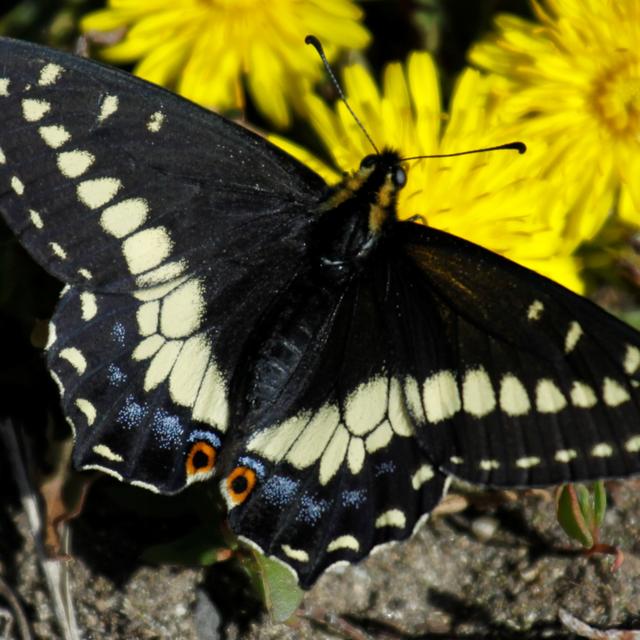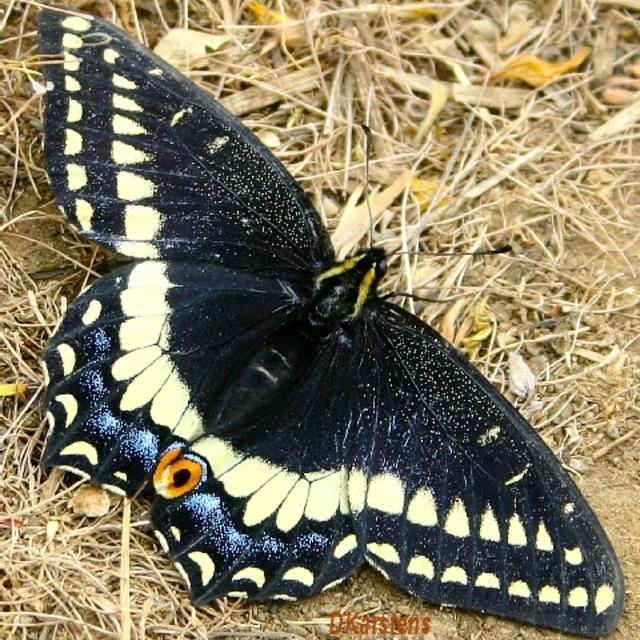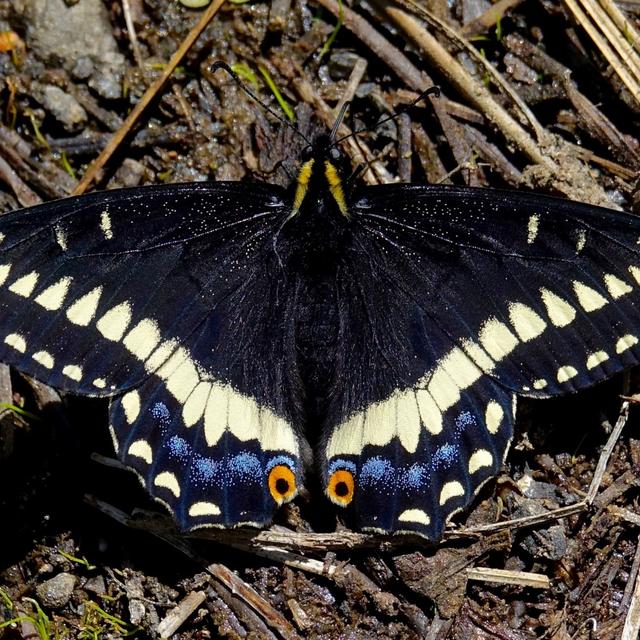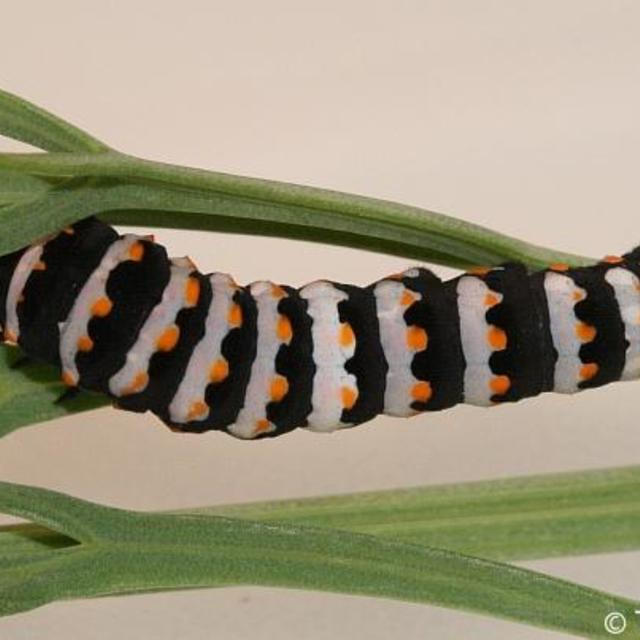Indra Swallowtail
Papilio indra Reakirt, 1866
Family: Papilionidae
Subfamily: Papilioninae
Identification: Abdomen is all black, or black with a yellow dash on the side of the rear. Wings are mostly black with pale yellow markings. Tails are very short on most subspecies.
Wing Span: 2 1/2 - 3 inches (6.2 - 7.2 cm).
Life History: Males watch from rocky areas below tops of hills or mesas for receptive females. Females lay eggs singly on top of host plant leaves or on flowers. Caterpillars feed on the edges of leaves and hide at the base of plants. Chrysalids hibernate.
Flight: One flight, with occasional late-flying individuals of desert populations, March-August.
Caterpillar Hosts: Aromatic herbs of the parsley family (Apiaceae) growing among rocks.
Adult Food: Flower nectar.
Habitat: Mountains, desert mountains, and canyons.
Range: Southern California, Nevada, Arizona, New Mexico north to South Dakota, west to Washington.
Conservation: Several subspecies occur entirely or primarily on Federal lands. These include kaibabensis (Grand Canyon National Park), minori (Colorado National Monument and B.L.M.), panamintensis (Death Valley National Monument), and martini (Mojave Desert National Preserve).
NCGR: G5 - Demonstrably secure globally, though it may be quite rare in parts of its range, especially at the periphery.
Management Needs: Prevent removal of caterpillar host plants from public lands. Limit collection by permits.
Please donate!
We depend on donations to keep Butterflies and Moths of North America freely available. We want to express our gratitude to all who showed their support by making a contribution this year. You can donate to support this project at any time.
Advertise with us!
Do you have a product or service that you think would interest BAMONA users? If you would like to advertise on this website, contact us by email, or use the contact form and select the "Advertising" category.
Verified Sightings
Displaying 1 - 24 of 494 verified sightings

Observation date: May 10, 2024
Submitted by: Kerry Turley
Region: Yakima County, Washington, United States
Verified by: davidwdroppers
Verified date: Nov 09, 2025

Observation date: Jun 12, 2012
Submitted by: Dwaine Wagoner
Region: Natrona County, Wyoming, United States
Verified by: J_Martineau
Verified date: Aug 16, 2025

Observation date: Jun 09, 2025
Submitted by: Buddy Mays
Region: Jefferson County, Oregon, United States
Verified by: Ken Davenport
Verified date: Jun 12, 2025

Observation date: May 12, 1992
Submitted by: papilio1
Region: Lyon County, Nevada, United States
Verified by: Ken Davenport
Verified date: Jun 08, 2025

Observation date: Jun 05, 2024
Submitted by: Joshua C
Region: Taos County, New Mexico, United States
Verified by: stevecary
Verified date: Oct 01, 2024

Observation date: May 26, 2024
Submitted by: Seth Mueller
Region: San Bernardino County, California, United States
Verified by: Ken Davenport
Verified date: Jun 06, 2024

Observation date: Apr 17, 2024
Submitted by: Robert Gorman
Region: San Diego County, California, United States
Verified by: Ken Davenport
Verified date: May 05, 2024

Observation date: Jul 19, 2023
Submitted by: J_Martineau
Region: Montana, United States
Verified by: J_Martineau
Verified date: Dec 20, 2023

Observation date: Jul 02, 2016
Submitted by: Robb Hannawacker
Region: Grand County, Utah, United States
Verified by: James Steen
Verified date: Sep 04, 2023

Observation date: Apr 25, 2019
Submitted by: Bixia
Region: Washington County, Utah, United States
Verified by: James Steen
Verified date: Aug 21, 2023
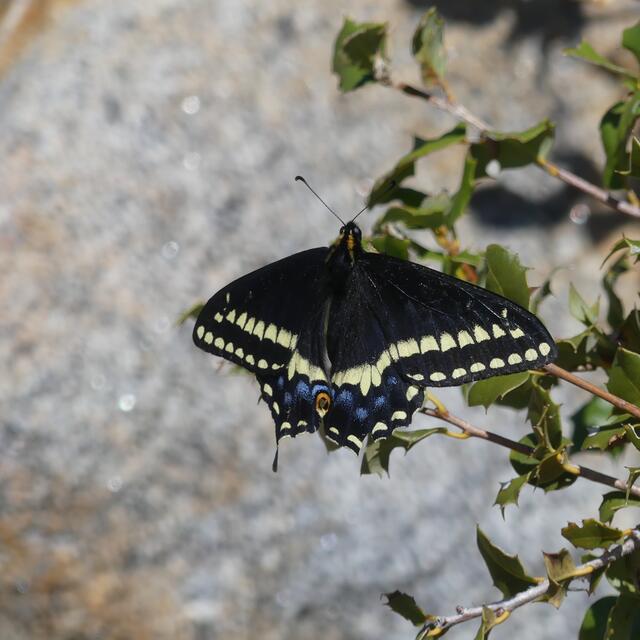
Observation date: Apr 27, 2023
Submitted by: Robert Gorman
Region: San Diego County, California, United States
Verified by: Ken Davenport
Verified date: Aug 17, 2023
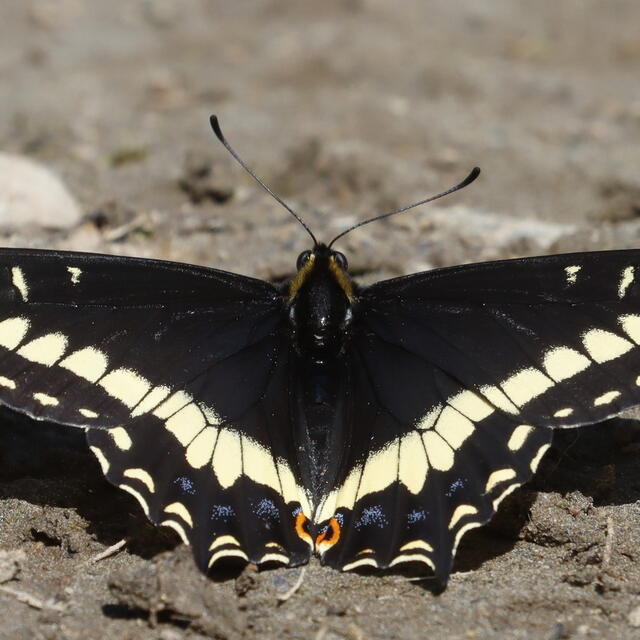
Observation date: Jul 31, 2023
Submitted by: natureali
Region: Mono County, California, United States
Verified by: Ken Davenport
Verified date: Aug 07, 2023
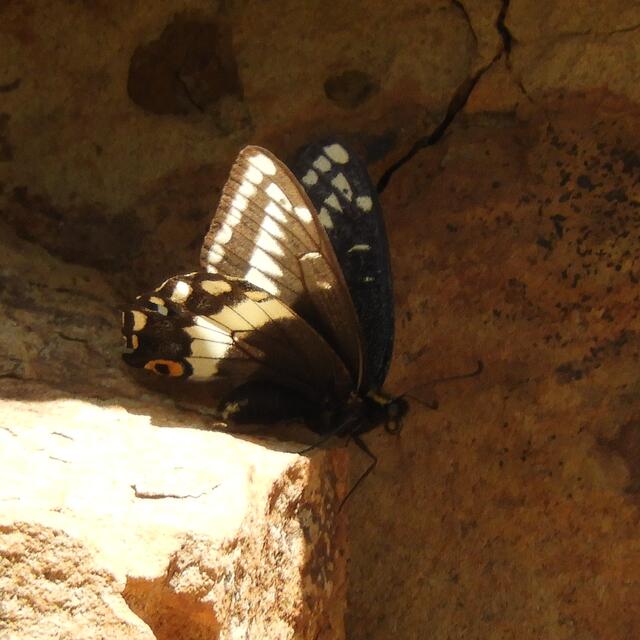
Observation date: Jun 02, 2023
Submitted by: hiker96
Region: Klickitat County, Washington, United States
Verified by: davidwdroppers
Verified date: Jun 03, 2023

Observation date: May 21, 2022
Submitted by: scott ellis
Region: Uintah County, Utah, United States
Verified by: James Steen
Verified date: Feb 11, 2023

Observation date: Aug 03, 2022
Submitted by: stevecary
Region: Taos County, New Mexico, United States
Verified by: stevecary
Verified date: Aug 15, 2022

Observation date: Jun 22, 2022
Submitted by: abstractfrog
Region: Valley County, Idaho, United States
Verified by: stevekohler
Verified date: Aug 10, 2022

Observation date: Jul 09, 2022
Submitted by: Pheasantboy77
Region: Gallatin County, Montana, United States
Verified by: J_Martineau
Verified date: Jul 11, 2022

Observation date: May 01, 2022
Submitted by: weflybye
Region: Klickitat County, Washington, United States
Verified by: davidwdroppers
Verified date: May 04, 2022

Observation date: Jun 07, 2015
Submitted by: dlister
Region: Mono County, California, United States
Verified by: Ken Davenport
Verified date: Jan 24, 2022

Observation date: Aug 08, 2021
Submitted by: twofried
Region: Taos County, New Mexico, United States
Verified by: stevecary
Verified date: Aug 09, 2021

Observation date: Jun 23, 2021
Submitted by: Rccarlson64
Region: Chelan County, Washington, United States
Verified by: davidwdroppers
Verified date: Jun 25, 2021

Observation date: May 31, 2021
Submitted by: Zach Eckert
Region: Kittitas County, Washington, United States
Verified by: davidwdroppers
Verified date: Jun 03, 2021
Observation date: May 24, 2021
Submitted by: davidwdroppers
Region: Okanogan County, Washington, United States
Verified by: davidwdroppers
Verified date: May 25, 2021

Observation date: Apr 29, 2021
Submitted by: glennfine
Region: Shasta County, California, United States
Verified by: Ken Davenport
Verified date: May 19, 2021
- 1 of 21
- next ›






